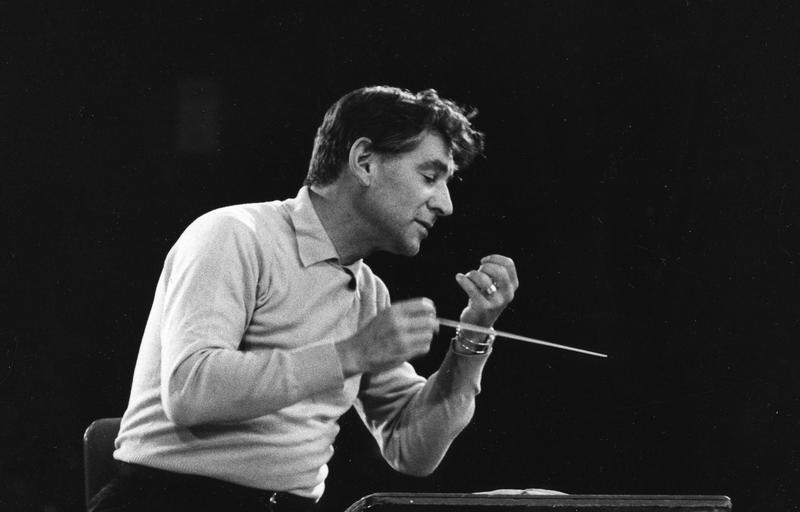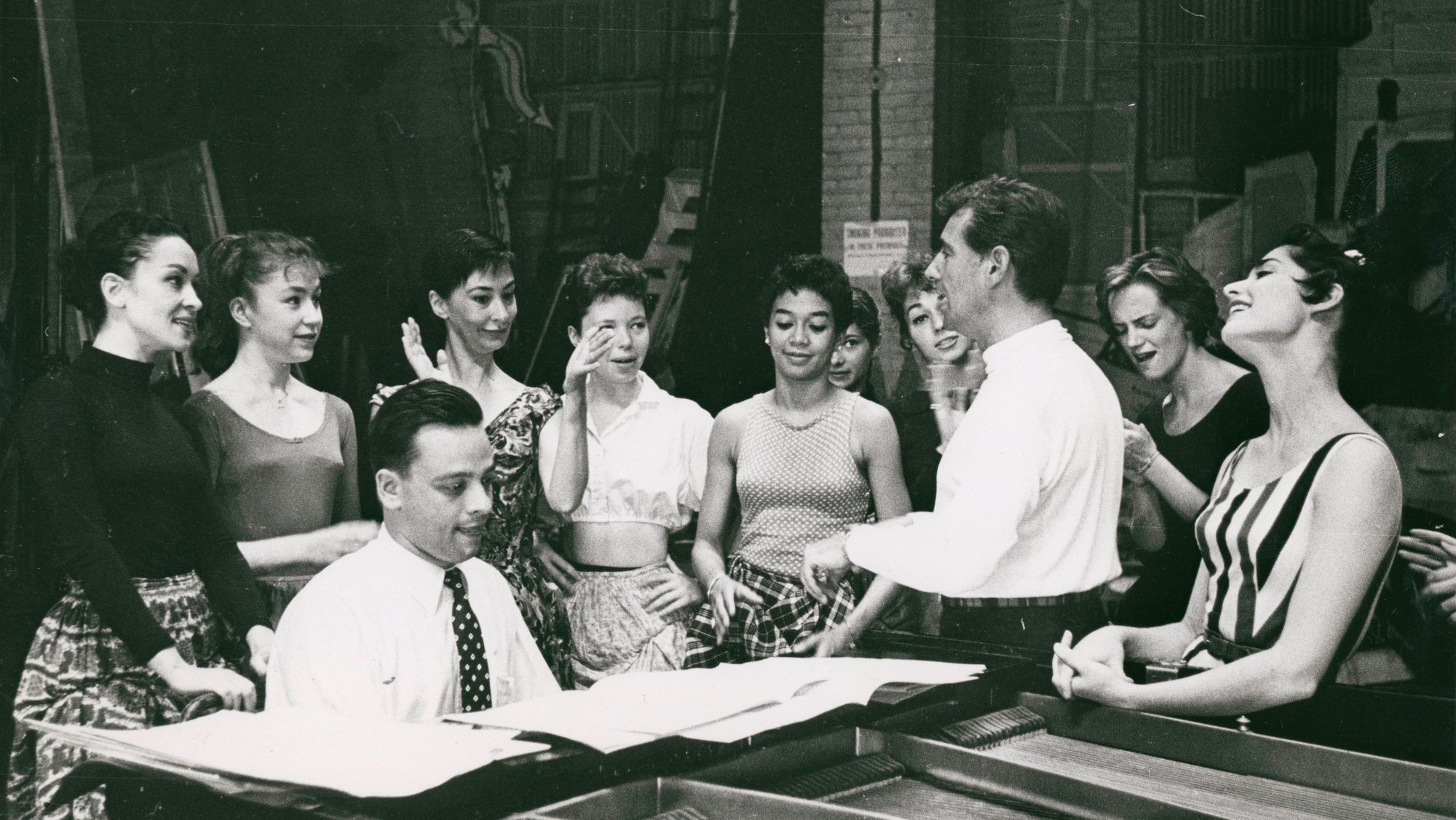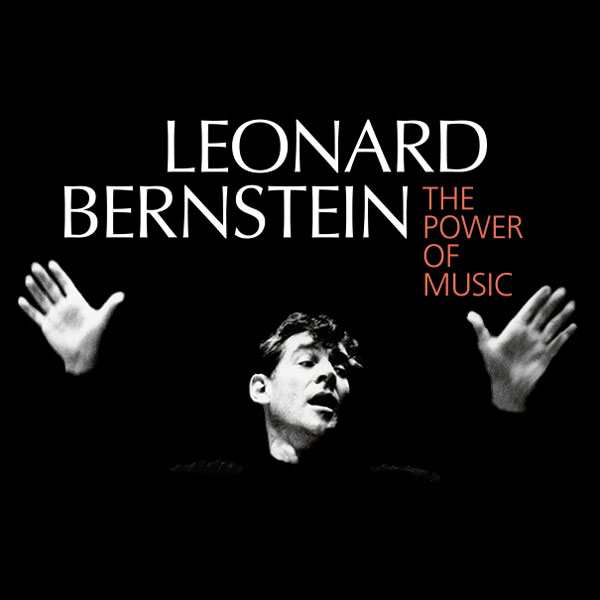Leonard Bernstein
via Greenville Symphonic Orchestra
"Music can name the unamenable and communicate the unknowable."
Leonard Bernstein
Leonard Bernstein would be last 25 August, 101 years-old. Composer, conductor, pianist, educator, musician, cultural ambassador, and humanitarian, marked generations with his commented concerts.
So many of us who experienced Leonard Bernstein up close have a story to tell. No doubt.
Leonard Bernstein was an American composer, conductor, author, music lecturer, and pianist. He was among the first conductors born and educated in the U.S. to receive worldwide acclaim.
According to music critic Donal Henahan, he was "one of the most prodigiously talented and successful musicians in American history."
The Leonard Bernstein at 100 a two-year global celebration of the life and career 20th century cultural giant, featuring more than 4,500 events on six continents was announced on May 2017 by the Leonard Bernstein Office.
A kickoff at The John F. Kennedy Center for the Performing Arts on September 22, 2017 officially launched the celebrations which continued worldwide through August 25, 2019.
The Leonard Bernstein100 Celebration far exceeded anyone’s expectations.
- Education:
Let's talk about Music in education, once more. Music curriculum continues not to be a major value in public schools. Oh! It's so wrong! Time to think about!
Watch again the video Sir George Martin talking about Music in public schools Teaching Music.
Students attending public schools in high poverty communities have less access to Arts instruction than their peers in more affluent communities. They have not the chance to study Arts.
They are losing the opportunity to include Arts in their activities extra-school. School time will be the right place to educate young people on Arts.
Leonard Bernstein, charismatic conductor and devoted educator - teacher at high school - popularized classical music in the concert hall and through the television screen through his Young People's Concerts.
Leonard Bernstein was part performer (his earliest aspirations were as a pianist), part composer, part conductor, part lecturer and author, and part teacher.
An 11-time Emmy Award winner, his Young People’s Concerts with the Philharmonic spanned over 14 seasons.
So he reimagined the role of the conductor as a vocal advocate for music’s ability to unite communities.
Leonard Bernstein at The Albert Hall, 1973
credits: Allan Warren
"Moreover, Bernstein loved all types of music, and strove to make Beethoven, Bach, and even the Beatles accessible for “students” ages 8 to 80 through his Young People’s Concerts."
Before Bernstein’s tenure, no widely-aired television show existed to educate youth through musical performances.
I remember being fascinated by the TV cameras. In those days TV was practically brand new, and seemed exotic.
- Google Doodle:
A larger-than-life personality, Bernstein held the baton with emphatic mannerisms, reacting to the emotion of the music mid-performance.
As Director of The New York Philharmonic, he exposed generations of young people to musical programming on television. In this way, and as a popular commentator about music on radio and TV, he made intellectual culture more accessible to the public at large.
Tune-up! Visit Tune-Up for resources.
West Side Story
Jerome Robbins, Robert Wise, 1961
Musical composer Leonard Bernstein
- West Side Story:
A modern Shakespearean tale following the turf war between two rival gangs and star-crossed lovers in the west side of Manhattan, was brought to life through Bernstein’s gripping score.
West Side Story is based on Shakespeare's classic Romeo and Juliette, two youngsters from rival New York City gangs fall in love, but tensions between their respective friends build toward tragedy.
The original 1957 production was nominated for six Tony Awards including Best Musical.
screenshot West Side Story
Google Arts & Culture
- Google Arts & Culture:
“In the olden days, everybody sang.”
Those are the words of Leonard Bernstein, composer behind the iconic musical West Side Story, where everyone danced and snapped through the streets, too. Whether you’re a Jet all the way or you side with the Sharks, Tony and Maria’s love story is as poignant today as it was 60 years ago, when the Broadway musical first debuted.
Blog Google
West Side Story
Leonard Bernstein
Google Arts & Culture
To pay tribute to the new version of Romeo and Juliet, Google Arts and Culture has launched a virtual museum with the history behind West Side Side Story.
Bringing together artifacts and mementos from the making of the musical and movie, behind-the-scenes photographs, and a peek into the modern-day representation of the musical, this collection explores the history, artistic value and social relevance of West Side Story.
West Side Story
Leonard Bernstein
Google Arts & Culture
It offers behind-the-scenes photos of the movie and original production, along with images of various productions over the years and of one of the latest renditions.
Invite your students to explore the history and legacy of the iconic musical by visiting the virtual exhibition diving in the iconic musical
They might also want to drop by the website on a VR headset if they want to visit iconic locations that inspired the musical's sets through panoramic images or to watch Riff's Get Cool, Boy number as a 360-degree video.
West Side Story
Leonard Bernstein
Google Arts & Culture
“This will be our reply to violence:
to make music more intensely,
more beautifully,
more devotedly than ever before.”
to make music more intensely,
more beautifully,
more devotedly than ever before.”
Don't loose such an important digital educational resource! Above all through West Side Story you can teach non-violence values.
Someday
Somewhere
We'll find a new way of living
We'll find a way of forgiven
Somewhere, lyrics
Since it tells the story of a local New Yorker falling in love with a Puerto Rican immigrant, it has essays and editorials you can read on how the musical tackled immigration, civil rights and racial stereotypes, as well as how it was seen as a "plea for racial tolerance and non-violence."
West Side Story
Leonard Bernstein
Google Arts & Culture
- The Somewhere Project:
In early 2016, Carnegie Hall launched The Somewhere Project, a major citywide exploration of “West Side Story.”
Students wrote original songs in projects across New York City, and community arts organizations incorporated the themes into their own programming, affirming how this quintessential story written 60 years ago "about love, conflict, and learning to live alongside those who are different still resonates with us in such a contemporary way."
Explore the history and legacy of the iconic musical by visiting Google Arts & Culture.
Include it into your school lessons. And why not develop a similar activity at your school in a cross-curricular project?
Cross-curricular project: Languages, Literature, Arts, Music Civics.
Explore it as a teachers to prepare the activities before discussing the idea with your students:
Note:
Google Arts & Culture includes several educational tools and resources for teachers and students. There are educational videos, available through a YouTube channel and embedded on the Google Arts & Culture web page.
Available:
Online at g.co/westsidestory
Google Arts & Culture app on Android and iOS
Online at g.co/westsidestory
Google Arts & Culture app on Android and iOS
- Exhibition: Leonard Bernstein, The Power of Music
Leonard Bernstein: The Power of Music
credits: National Museum of American Jewish History
The National Museum of American Jewish History organized the exhibition Leonard Bernstein: The Power of Music the first large-scale museum exhibition to illustrate Leonard Bernstein’s life, Jewish identity, and social activism.
Visitors found a Bernstein who expressed the restlessness, anxiety, fear, and hope of an American Jew living through World War II and the Holocaust, Vietnam, and turbulent social change - what Bernstein referred to as his “search for a solution to the 20th‐century crisis of faith.”
Hearing from Ivy Weingram, Curator of Leonard Bernstein: The Power of Music through video clips.
Visitors found a Bernstein who expressed the restlessness, anxiety, fear, and hope of an American Jew living through World War II and the Holocaust, Vietnam, and turbulent social change - what Bernstein referred to as his “search for a solution to the 20th‐century crisis of faith.”
Leonard Bernstein: The Power of Music
credits: AP Photo/Matt Slocum
The exhibition explores his position as an American conductor and his works as a composer. It celebrates the centennial birthday of one of the greatest composers and conductors of the 20th century.
It features interactive media 360 and sound installations along with approximately 100 historic artifacts, including Bernstein’s piano, marked-up scores, conducting suit, annotated copy of Romeo and Juliet used for the development of West Side Story, personal family Judaica, composing easel, and a number of objects from his studio.
- The Virtual exhibition:
Invite your students to explore the virtual exhibition clicking here
There are 9 scenes to explore in detail. Students may scroll down to view them in order of the exhibition galleries.
- The Virtual exhibition:
Invite your students to explore the virtual exhibition clicking here
Every image on this site is clickable! They can click any photo to enlarge the image, read exhibition text, or explore an object more closely.
Clicking the green plus sign to enlarge an artifact. Clicking the red “i” sign to enlarge a label.
Hearing from Ivy Weingram, Curator of Leonard Bernstein: The Power of Music through video clips.
Note:
The exhibition is now traveling. Teachers can learn where it's going or to learn how to bring the exhibition to your community, click here.
Leonard Bernstein: The Power of Music
credits: National Museum of American Jewish History
“I want to conduct,” he wrote late in life. “I want to play the piano. I want to write for Hollywood. I want to write symphonic music. I want to keep on trying to be, in the full sense of that wonderful word, a musician. I also want to teach. I want to write books and poetry. And I think I can still do justice to them all.''
My vision on this publication is to share with young teachers the importance of music in school curriculum through the pedagogical director and composer who exposed generations of young people to musical programming on television.
"Life without music is unthinkable. Life without music is academic. That is why my contact with music is a total embrace.”
"Life without music is unthinkable. Life without music is academic. That is why my contact with music is a total embrace.”
G-Souto
27.08.2019
update: 25.08.2022
Copyright © 2019G-Souto'sBlog, gsouto-digitalteacher.blogspot.com®

Schools : Let's talk about Leonard Bernstein & the power of musci : resources by GinaSouto is licensed under a Creative Commons Attribution-NonCommercial-NoDerivatives 4.0 International License.
















No comments:
Post a Comment